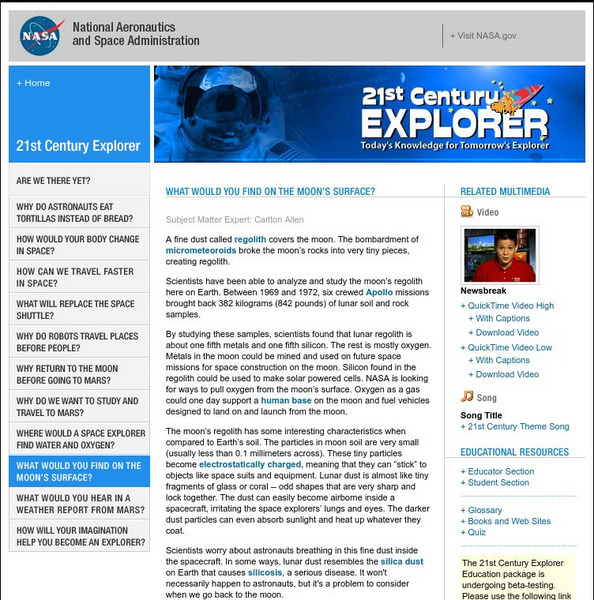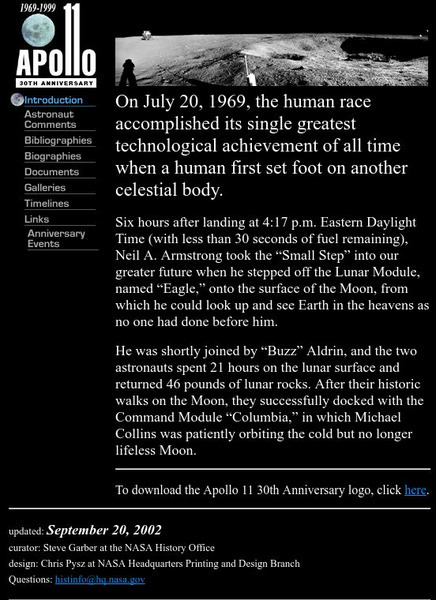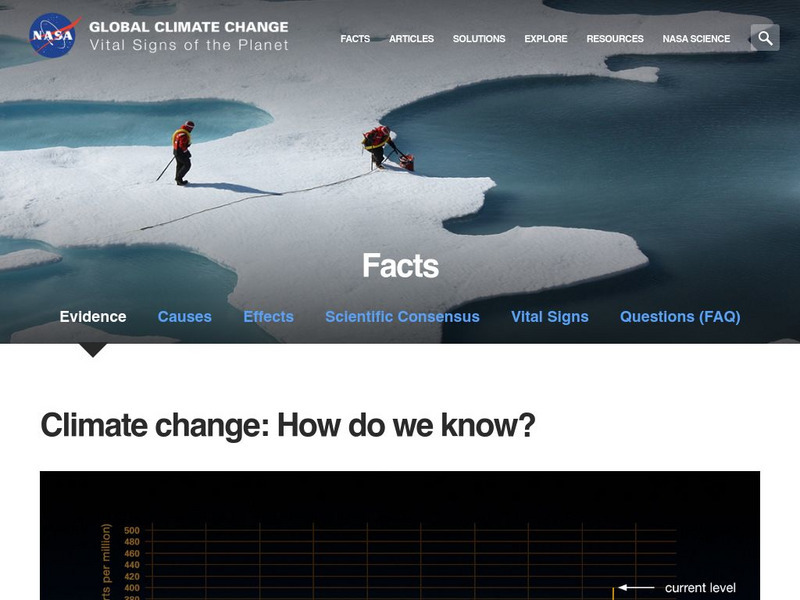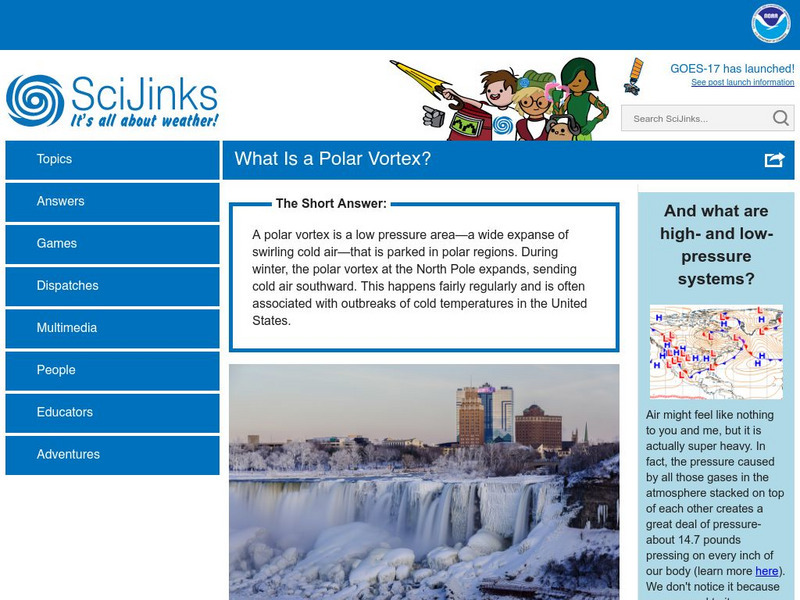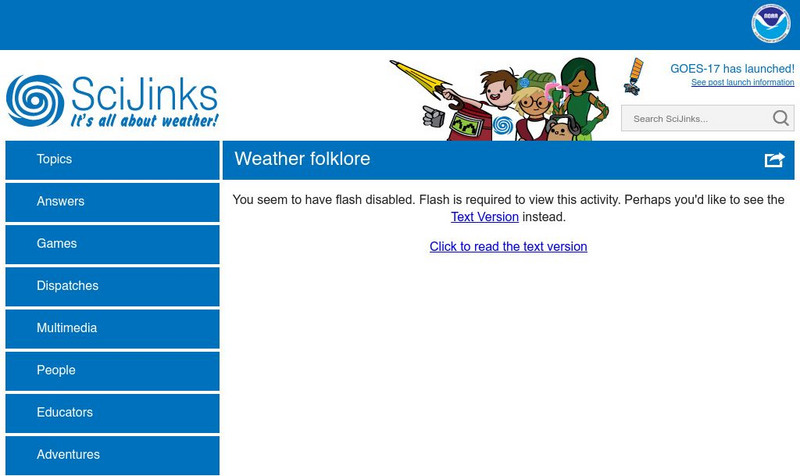NASA
Nasa: Building a Winogradsky Column [Pdf]
NASA teacher's guide to building a Winogradsky Column to study microorganisms. When this guide was first released, students were invited to participate in two webcasts with NASA scientists. The conversations from those webcasts are...
NASA
Nasa: 21rd Century Explorer: Why Return to the Moon Before Going to Mars?
This short article elaborates on why it's important to have more space missions to the moon before sending a manned space mission to Mars. Follow links to learn more about NASA's other space missions.
NASA
Nasa: Neptune: Overview: The Windiest Planet
Prepared by NASA, this site provides a detailed look at the planet Neptune. The menu tabs are divided into overview, moons, rings, photo gallery, and facts and figures. Just click to access specific information on any of these topics.
How Stuff Works
How Stuff Works: 5 Strange Items Developed From Nasa Technology
Review an article highlighting five inventions developed by NASA that evolved into sought after mainstreamed creations such as baby formula and Speedo swim suits.
NASA
Nasa: Tour of the Electromagnetic Spectrum: Visible Light
Visible light waves are the only electromagnetic waves we can see. We see these waves as the colors of the rainbow. Each color has a different wavelength. Red has the longest wavelength and violet has the shortest wavelength. When all...
NASA
Nasa: 21st Century Explorer
This is a standards-based program follows that provides content on what astronauts eat, how bodies change in space, and how imagination would help you to become a space explorer. Teacher and student educational resources, glossary, books...
NASA
Nasa: Our Solar System
This thorough look at our solar system has numerous links to a variety of topics that are updated periodically.
NASA
Nasa: Aerial Photography: The Adventures of Amelia the Pigeon
An animated adventure story, developed by NASA, that helps children understand earth science concepts by using satellite photography and other types of aerial photographs to identify physical features on the surface of the earth. Teaches...
NASA
Nasa: 21st Century Explorer: What Would You Find on the Moon's Surface?
This article explains regolith on the moon: what it is, what it's made of, and how scientists could use it in future moon expeditions.
NASA
Nasa: 1nd Century Explorer: How Would Your Body Change in Space?
This article explores the changes an astronaut's body goes through in space. Also find the answer to many other fascinating questions people have about space travel.
NASA
Nasa: 1969 1999: Apollo 30th Anniversary
A special anniversary site for the Apollo 11 mission to the moon. Complete with comments from the astronauts, galleries with many images related to the mission, and much more.
NASA
Nasa: Night Sky Network: Pocket Solar System
Individual or classroom activity helps students understand the solar system because they can visualize it. Extension resources are included.
NASA
Nasa: Welcome to From Earth to the Solar System (Fettss)
A collection of high-resolution images of space. Images "showcase the discoveries and excitement of planetary exploration, with a focus on the origin and evolution of the Solar System and the search for life".
NASA
Nasa: Climate Change: How Do We Know?
Provides extensive evidence of the many ways scientists have observed and recorded climate change on a rapid, global scale. Lists different events observed, such as receding ice sheets and evidence in rocks, and presents graphs, images,...
NASA
Nasa: Sun: Overview: Our Star
A graphical representation of facts, figures, and information about our solar system's only star, the sun.
NASA
Nasa: The Geiger Counter
Site from NASA explaining the construction and use of a Geiger counter. The site has links to many related topics, such as plasma, ions, and electrons.
NASA
Nasa: Solar Data Analysis Center: The Solar Wind
This site provides insight into research, both past and present, regarding solar wind. Content includes a focus on what solar wind is and its cause.
NASA
NASA Kids Club: Rocket Builder
Students can hone their shape-recognition skills and use the plans to build a fleet of rockets.
NASA
Nasa: Solar Data Analysis Center: The Corona
This site provides a detailed overview of the sun's corona. Content includes a focus on research dedicated to the solar corona, and includes numerous images taken during solar eclipses.
NASA
Nasa: Sci Jinks: What Is a Polar Vortex?
Discover what a polar vortex is and how high and low pressure affects the weather.
NASA
Nasa: Sci Jinks: The Sky Is Broken!
Explains the dangers of volcanic ash plumes to airplanes, such as the eruption in 2010 of the Eyjafjallajokull volcano in Iceland which greatly disrupted air traffic in neighbouring countries.
NASA
Nasa: Sci Jinks: Weather Folklore
Find out some of the weather folklore from various areas of the world.
NASA
Nasa: Material Analysis
Describes the use of alloys on the space shuttle, and how to analyze alloys using X-ray fluorescence.


![Nasa: Building a Winogradsky Column [Pdf] Activity Nasa: Building a Winogradsky Column [Pdf] Activity](https://static.lp.lexp.cloud/images/attachment_defaults/resource/large/FPO-knovation.png)



